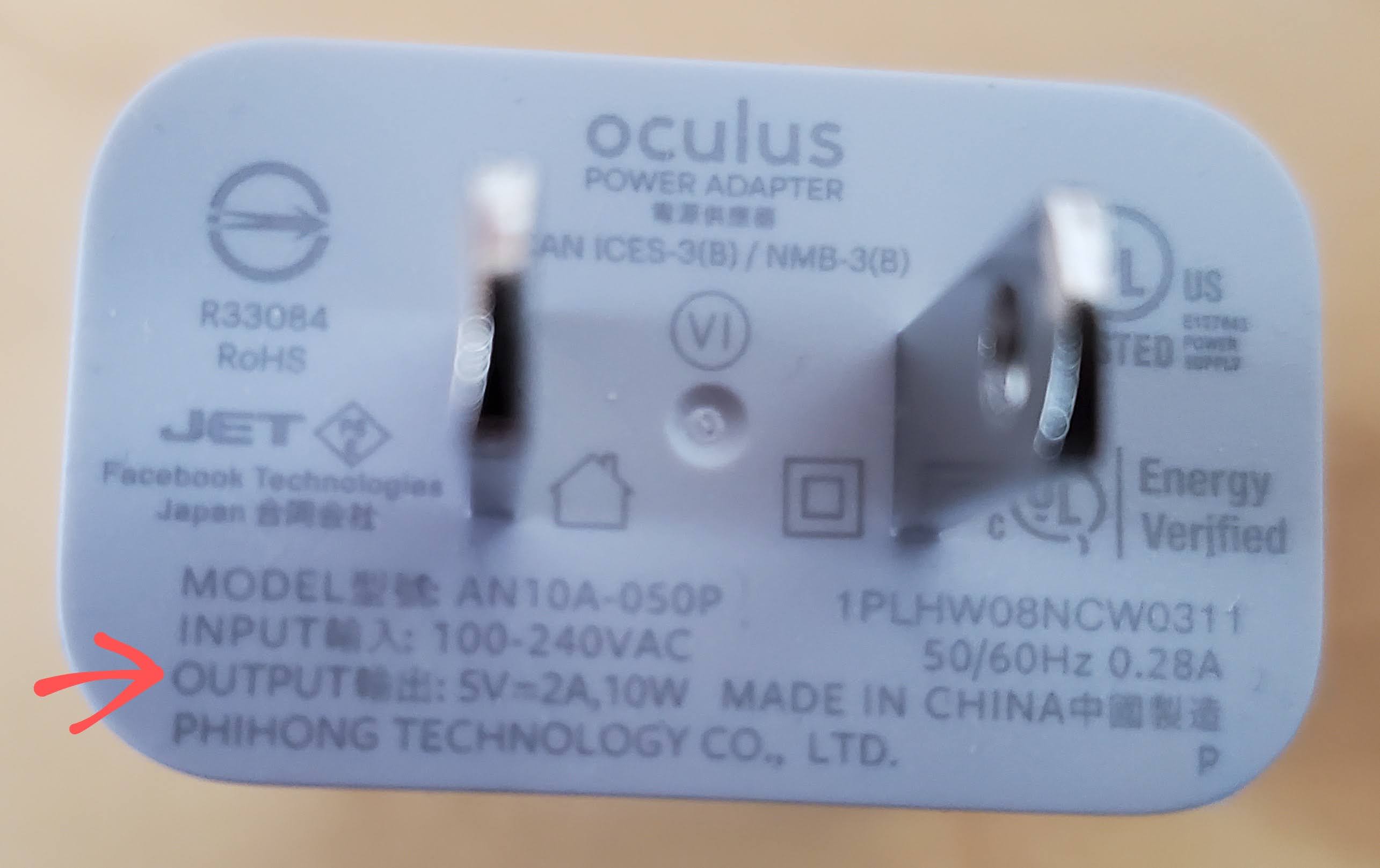Keeping a device in good condition helps extend its usable life and can make them pleasant to use even after a long time.
Battery Care
Batteries are the first thing to fail in most devices, but you can make them last as long as possible by following these tips.
- If you are not using your battery (keeping your laptop plugged in for most of the time), you might want to remove the battery if it’s possible (newer laptops and most phones may not allow this)
- If you won’t use your device for a long time, charge the battery to 40-80% then turn the device completely off. It is best to aim for 50%, but even leaving it at 100% is better than at 0%. Make sure the device is completely off, as it will still drain battery in sleep mode.
- Avoid fast charging. Try to use an older, slower charger or some devices may have a setting in the battery section to disable fast charging. The small print on the charging brick may tell you how fast it is. The example shown below lists the Output as 5V-2A,10W, meaning that this is a 10 watt charger. Some don’t list the wattage, in which case just multiply the V with the A to get W. Lower number means slower charger. Generally 5W is the slowest.

-
Avoid extreme temperatures, especially when charging or heavily using your device. Turn off your device if you must expose it to extreme conditions.
-
Try not to allow your device to reach 0-5%
-
Don’t heavily use a phone while it is charging
-
A laptop may be left plugged in for long periods of time, but occasionally let it use its battery
-
Ideally, don’t leave a smartphone plugged in at 100% for too long. If you are willing to put in the effort, keep your phone between 20-90% as much as possible.
Unfortunately, a battery will always degrade over time, you can only slow down this process. You can read this article on how to deal with a poorly performing battery here.
Cleaning a Laptop
Always completely turn off your device and unplug it. Keep in mind that the battery is still supplying power to your laptop, so still be careful with it. Use a mixture of dish soap and water, dip a cloth into the water and wring it out so it’s only slightly damp, not dripping wet. Wipe down surfaces and avoid getting close to gaps or holes. Wipe down the device again with a cloth dipped in water only and wringed out, and wipe it down one last time with a completely dry cloth.
For the keyboard, rubbing with isopropyl alcohol is recommended (since it dries almost immediately), but if you are very careful to not allow any water through the gaps you can use soap and water again. A can of compressed air or shaking the keyboard upside down can free crumbs or dust from inside the keyboard.
For the screen, use a microfiber cloth and never a tissue, as this can scratch your display. Press gently and wipe in one direction, not in circles. If there is sticky residue on your display, you may need to use fluids. There are several chemicals you shouldn’t use, including most surface or window cleaners, so making your own solution is your best bet. Additionally, tap water may scratch your display, so you need distilled water. Half distilled water with half white vinegar or isopropyl alcohol, or distilled water with a drop of dish soap will work. Again, use a cloth dipped in this solution that is only damp, not dripping wet.
Cleaning a Phone
The FCC has official recommendations for how to keep your phone sanitized.
